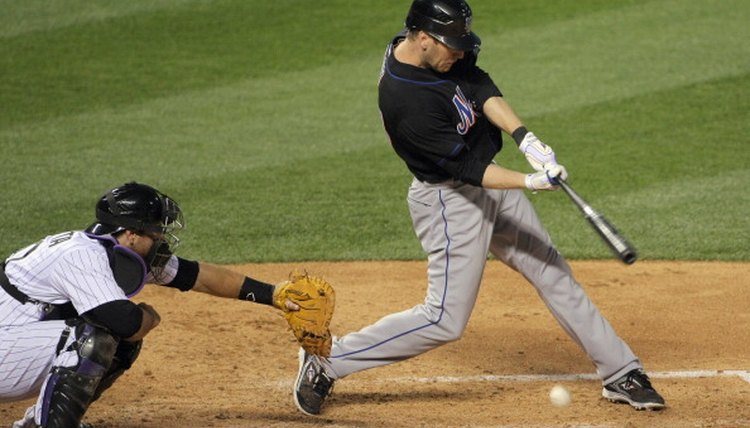A Catcher's Signs to a Pitcher

A catcher's job is like that of a coach on the field. He is responsible for calling the pitches in a game and giving signals to the pitcher to let him know which pitch he should throw next. Those signals are part of the language of baseball and it's how the catcher communicates with the pitcher.
Basic Signals
When the catcher is in his crouch and the batter is in the batter's box, the pitcher will look for the catcher's signals about what pitch should be thrown next. When the catcher puts down one finger from his throwing hand between his legs, he is calling for a fastball. Two fingers indicate a curveball, three fingers indicate a slider, four fingers indicates a change-up. These are basic signals. In many cases, pitchers and catchers will work out their own set of signals that may be different. As long as the pitcher and the catcher have communicated ahead of time and are on the same page, it's fine to change the basic signals.
Indicator
Hitters generally do not crane their neck and try to sneak a peek at the catcher's signal -- this is considered a violation of baseball's "unwritten code" -- but a coach at first or third or a runner on second base may try to decipher the signals and let the batter know the next pitch. To prevent this, catchers may use an indicator signal prior to letting the pitcher know what the next pitch should be. For example, if the catcher wants a slider, he may let the pitcher know that if he flashes one finger twice in a row, the following signal is the next pitch. The catcher may flash 10 finger signals before he shoots down one finger twice in a row. If he puts down three fingers on the next signal, he is telling the pitcher to throw the slider. He may continue to put down finger signals after that to further confuse the opponent.
Location
At higher levels of baseball, the catcher will also indicate the location of the pitch: inside or outside and high or low. He may tap his left shin guard if he wants the pitch low and inside to a right-handed hitter. He may tap his left thigh if he wants the pitch high and inside. He uses his right leg on pitches that should be thrown outside. Additionally, the catcher will usually give his target to the spot he wants the pitch thrown, but when there are runners on base the catcher won't want to give up the location until the last instant.
Shaking Off Signals
In some cases, the pitcher will not feel confident about the catcher's pitch selection. Since the pitcher is ultimately responsible for the results, he may let the catcher know that he wants a different pitch called. The pitcher can shake his head to indicate "no." He can also shake his glove against his uniform shirt to indicate that he wants another pitch selection.
Additional Signals
The catcher will shoot his fist down if he wants the pitcher to throw a pitchout.This is done when the catcher believes the base runner is stealing. He has a much better chance of throwing the runner out if the pitcher fires a hard fastball away from the plate so he can receive the ball cleanly and easily step and throw toward second or third base. The catcher will also point with his thumb to first base if the wants the pitcher to attempt to pick the runner off at first base.
References
Writer Bio
Steve Silverman is an award-winning writer, covering sports since 1980. Silverman authored The Minnesota Vikings: The Good, The Bad and The Ugly and Who's Better, Who's Best in Football -- The Top 60 Players of All-Time, among others, and placed in the Pro Football Writers of America awards three times. Silverman holds a Master of Science in journalism from the Medill School of Journalism.
